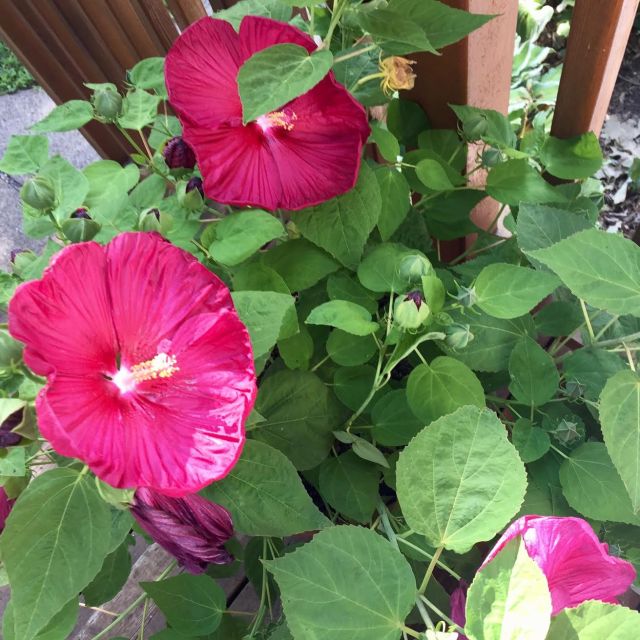
I could not resist buying this beautiful hibiscus plant at the St Paul Farmer’s Market on Saturday. The farmer told me that it is perennial and I could plant it directly into my garden, prune and mulch it in the fall and it would survive. It’s a variety called Luna Rose, hardy in zone 4 which is good for Saint Paul, Minnesota where I live. My real reason for getting this beauty is to see if I could dye with its showy pinky red flowers.
It is worth mentioning that it is not the same kind of hibiscus as that used to make our favorite summer beverage Jamaica Tea, a beat-the-heat iced tisane we discovered in New Mexico. We make our own version of this with dried hibiscus (half cup per quart of water), cold brewed, with cinnamon, cardamom, fresh ginger and sliced citrus fruit.
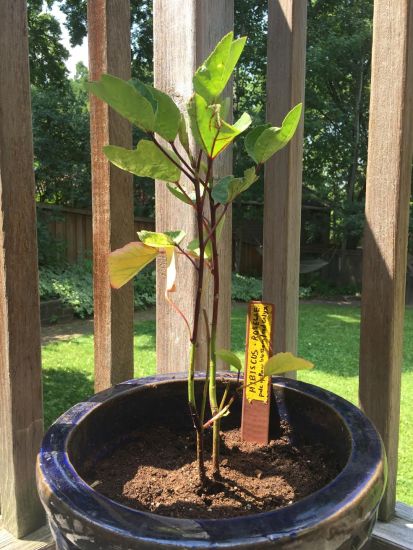
As it happens, a couple of days later I was browsing plants at a nice spot in NE Mpls called Mother Earth Gardens and actually found a hibiscus sabdariffa L. or “roselle.” This is the tropical variety of hibiscus that bears the calyxes (fruit/seed pods) that can be dried and used for tea. I will see how long I can keep it alive in a container over the winter.
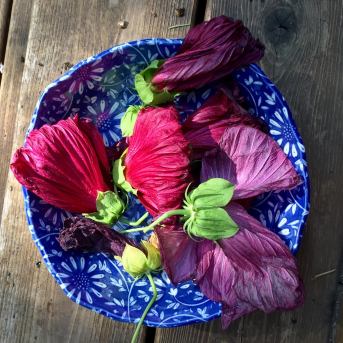
With the Luna Rose hibiscus producing several palm sized flowers, opening and closing every day, I decided to get right to harvesting and dying. I recently discovered the work of textile artist India Flint. She and others in the eco- or natural dyeing movement provide directions in books and online on how to coax color out of one’s own garden onto cloth.
The first step is to prepare fabric to take and hold onto dye. I first soaked a length of silk for a couple of hours in a mordant made with a couple of tablespoons of alum from my spice cupboard mixed with warm water. I had the alum around for a pickling recipe but I have never used it. It has gone out of fashion for pickling but it is very much mentioned as a fairly safe and effective mordant in eco-dying recipes I found.
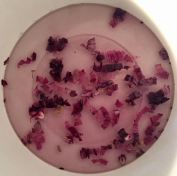
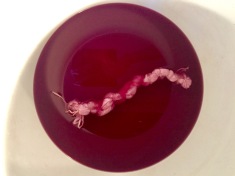
Next I worked on my dye by gently simmering about a quarter cup of the flower heads, chopped, for an hour. I did a bit of shibori twisting and tying with the silk and threw it into the strained pot of cranberry-red tea and continued simmering it.
After two hours I removed the brew from the stove top and untied the bundle. It was a very pale pink. I threw it back into the alum water to fix it and then I washed it by hand with some synthropol. Sadly the color washed right out with the soap. I dried the silk and noted that it was decidedly green, not the desired color but one I could use as a layer as I continued to experiment with dyeing the silk.
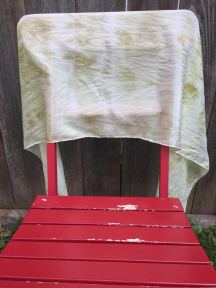
After washing, the pink tones disappeared.
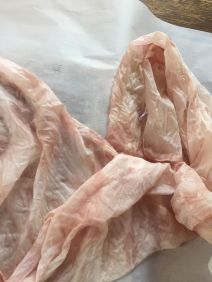
The pink reappeared after putting the silk back into the mordant.
The next day I threw the silk back into a new bath of mordant. I bought more alum and mixed up the proper strength of 3 tablespoons alum to a quart of water. I added a tablespoon of cream of tartar because I read that would promote crisp color. Surprisingly the pink blushed right back into the scarf.
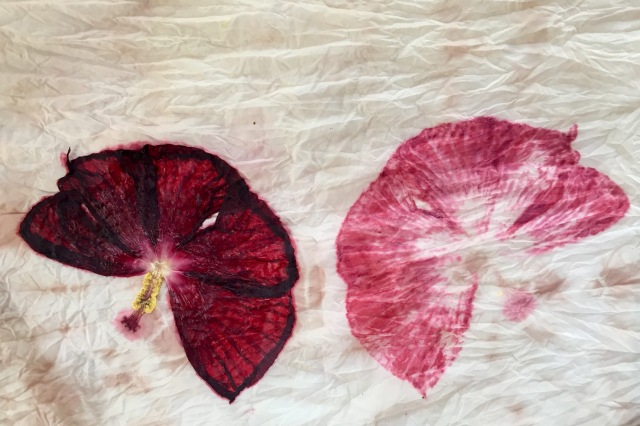
I decided to try what Flint calls hapa-zome ( from the Japanese ‘leaf-dye’). This process is satisfyingly physical and involves literally pounding the flower into the cloth. I picked another handful of blossoms from the hibiscus and sat down with my damp silk and a rubber mallet. The hibiscus blossoms turned into a viscous pulp after a few knocks but left a pretty intense pink smear of color. If I was careful, I was able to get more of a flower print.
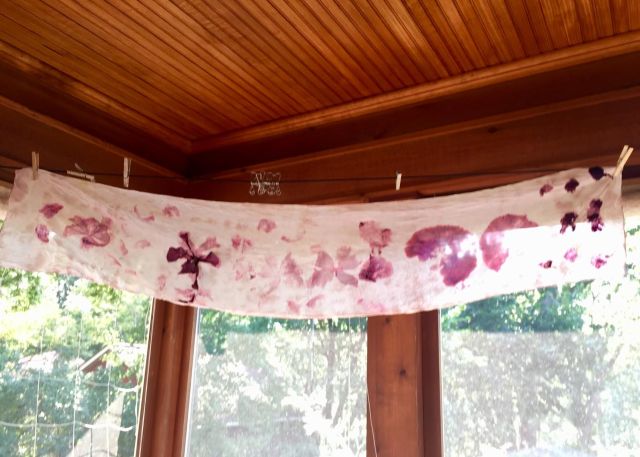
I let the silk dry and ran a steam iron over it to help set the colors. Flint writes in her book Eco Colour/Botanical Dyes for Beautiful Textiles that while “..this is not the most permanent of printing methods, most prints will survive at least a couple of years if only carefully hand washed from time to time.” She notes that this kind of print will gradually fade which leaves open the opportunity to dye and print it again making such pieces “trans-seasonal” and a reflection of the garden or the mood of a moment.